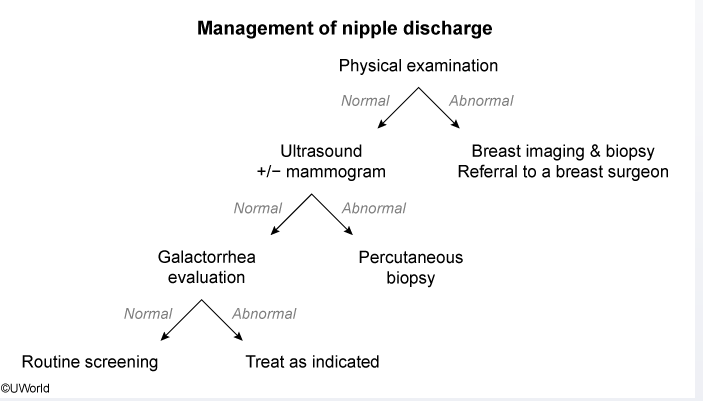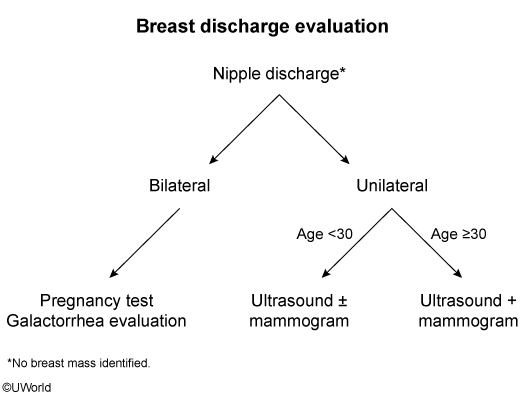Nipple discharge


Benign (physiologic) nipple discharge is typically bilateral, multiductal, nonbloody, and expressed only with manipulation of the breast. Common etiologies include endocrine abnormalities (eg, hyperprolactinemia, thyroid disease), medications (eg, antipsychotics, gastric motility agents), stress, and excessive breast/nipple stimulation.
However, nipple discharge can be a presenting feature of breast cancer; therefore, patients require further evaluation to exclude malignancy with breast examination, ultrasonography, and, for women age >30, mammography. Patients with a normal breast examination and normal imaging undergo a galactorrhea evaluation consisting of a prolactin level and thyroid studies. Patients with a negative evaluation have benign nipple discharge and no increased risk for cancer; therefore, management is reassurance and observation as well as routine screening with clinical breast examinations and mammography. Persistent or bothersome benign nipple discharge may be an indication for duct excision.
Nipple discharge is considered pathologic if it is spontaneous, unilateral, or persistent. Pathologic nipple discharge can present as a spectrum of sanguineous to serous appearing fluid, the latter of which may indicate lymphatic involvement.
The most common cause of pathologic nipple discharge is a benign papillary tumor (ie, papilloma) from the breast duct lining. Papillomas are typically benign but may have associated areas of atypia, ductal carcinoma in situ, and invasive intraductal carcinoma within the lesion. Therefore, patients with pathologic nipple discharge require further evaluation with age-based imaging (Choice B). In women age >30, as in this patient, imaging is with a mammogram plus ultrasound. Mammography has a high specificity rate (94%-100%) in the identification of suspicious breast tissue, and the addition of ultrasound increases the detection of small, noncalcified, or intraductal lesions. Because of denser breast tissue and high false-positive mammography rates, initial imaging in women age <30 is with a breast ultrasound with or without mammography.